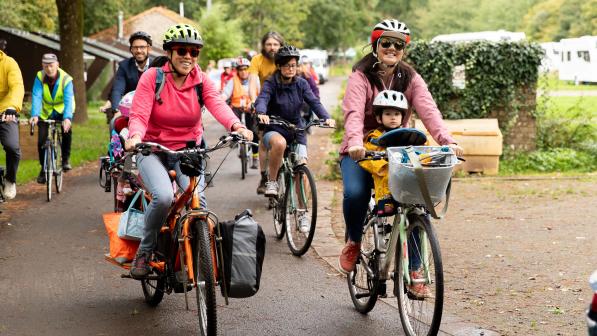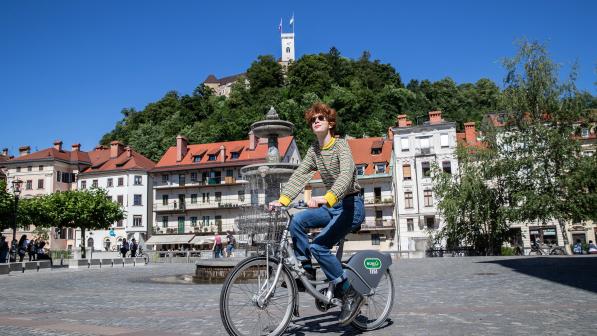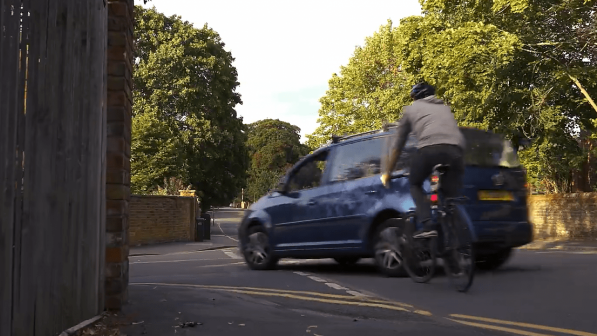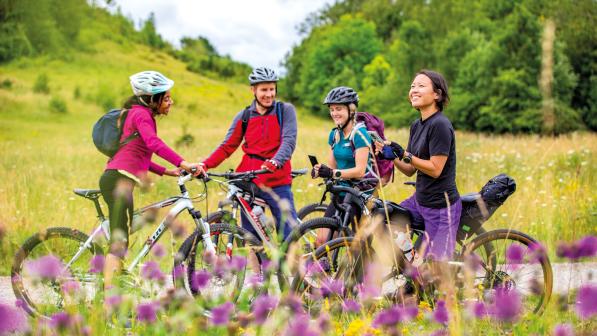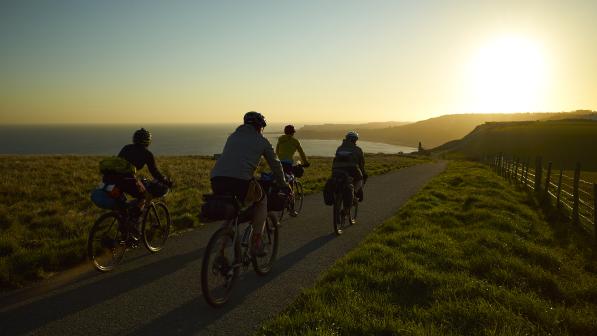Opinion: Will we cycle more in 2022?

2021 was full of surprises – some of them much more pleasant than others – and so attempting to guess how the land lies for cycling in 2022 sounds like a fool’s errand. However, while it’s difficult to predict what the rest of the world will look like even a few months in advance at the moment, there are some meaningful points of change we can expect for cycling in 2022.
Cycling for all
Back in old days, (pre Covid) I cycled to work each day in all weathers and all seasons. In 2022, as some of us return to workplaces, cycle commuting is likely to look more and more appealing: with Covid stubbornly insisting on impinging on our lives, cycling provides a safer, healthier and more pleasant alternative to public transport and cars.
Since the pandemic started, I like many other commuter cyclists have discovered the pleasure of cycling on quieter roads and even off-road, for leisure and also to get from A to B, a trend we can expect to continue to 2022. These different forms of cycling can appeal to different potential cyclists: since 2020 we have seen an increase in new cyclists taking to the roads, with a particularly welcome increase in women cycling. I am optimistic that this widening of the appeal of cycling to more diverse groups can continue in 2022, although it may need a bit of help from Cycling UK and our partners to encourage…
Our understanding of why people take up regular cycling and how to overcome the barriers to cycling has improved significantly in recent years. In 2022 UK governments will increasingly look to data and behavioural science to understand and influence behaviour change in transport. Cycling UK’s behaviour change projects in disadvantaged areas of England (Big Bike Revival) and in Scotland (Shift) are at the forefront of this work: the results from these large-scale projects help us all to understand how to help more people discover the appeal of cycling, and in 2022 we will be building on our insights from this work to increase diversity in cycling.
Safer roads for all
One important factor in broadening the appeal of cycling to more diverse people is tackling perceptions of road safety. This is one area of public policy where we have some real reasons to be hopeful in 2022.
Firstly, in January the government will announce major changes to the Highway Code to improve cyclist and pedestrian safety, the result of more than a decade of campaigning. But it’s not enough just to have these changes agreed, we will need to ensure that they are communicated clearly and widely to all road users.
Secondly, the government has finally committed to review the Road Traffic Offences Act, this will provide an opportunity to ensure that the safety of the most vulnerable road users is paramount and that appropriate deterrents are in place for dangerous driving.
Increasingly though, with good commitments secured at national government level, attention to improving our cycling experience rests with local and regional governments.
Again, there is good reason to be optimistic that local cycling infrastructure could improve. In England the new body Active Travel England comes into being in 2022 and will set and ensure high standards of infrastructure design. Across all four nations a raft of local and regional elections in May 2022 provides an important opportunity to challenge candidates to commit to the delivery of safer cycling locally. Our Cycling UK Cycle Advocacy Network is stepping up a gear this year, with materials and support to local campaigners across to help them make the case for cycling locally.
Unfortunately in 2021 we have seen a small number of councils moving in the wrong direction by removing publicly-funded and well-used cycle lanes with no or little consultation. In 2022 I hope that the cycling community can prevent this happening. Cycling UK will continue to do what we can through our Cyclists’ Defence Fund case to judicial review West Sussex Council and our support for other similar campaigns elsewhere.
Choice of wheels
Some new cycling trends look set to accelerate in 2022: expect the tide of e-bikes to rise still higher, with greater variety available and a steady spread of e-cycle hire schemes into new cities and towns. E-bikes have the exciting potential to make cycling accessible to a wider range of people, and in 2022 the government will launch its e-cycle trials pilot programme which aims to gather evidence on how to support and encourage more people to swap their cars for e-cycles to meet their regular transport needs.
One problem with e-cycles in 2021 has been availability of supply. The bike industry reminds us that the supply issues that have plagued them over the last 18 months won’t disappear overnight, although in 2022 they expect supply to be a headache for spare parts rather than for new bikes. So, that’s a good incentive for us all to look after our bikes in 2022, to minimise our need for replacement parts, and to burnish our environmental credentials with a bit of recycle, make-do and mend!
2022 then looks like a year studded with opportunities to turn commitments into reality for those who cycle. I’m looking forward to a busy year ahead, as we in the cycling world work to deliver on the potential of making a better world by bike.
Sarah Mitchell, Cycling UK chief executive
Routes for all
Increased awareness of the climate crisis, combined with ongoing travel uncertainty from Covid means that many of us will continue to explore the United Kingdom by bike in 2022. This is helped by the newest type of bike on the market: the off-road capable gravel bike, the popularity of which we can expect to grow further in 2022.
Developing and promoting new ways of cycle touring is part of Cycling UK’s heritage, it’s the role we started out doing when we were founded, more than 140 years ago, and it’s still something we are looked to for today. In recent years we launched popular long distance bikepacking routes the North Downs Way (2018), the Great North Trail (2019) King Alfred’s Way (2020) and West Kernow Way (2021).
In 2022, thanks to European Regional Development funding, we’ll be launching two new long distance routes in Kent and in Norfolk, but we’ll also be developing shorter day-long routes designed to appeal to a wider audience of cyclists.
2022 then looks like a year studded with opportunities to turn commitments into reality for those who cycle. I’m looking forward to a busy year ahead, as we in the cycling world work to deliver on the potential of making a better world by bike.
